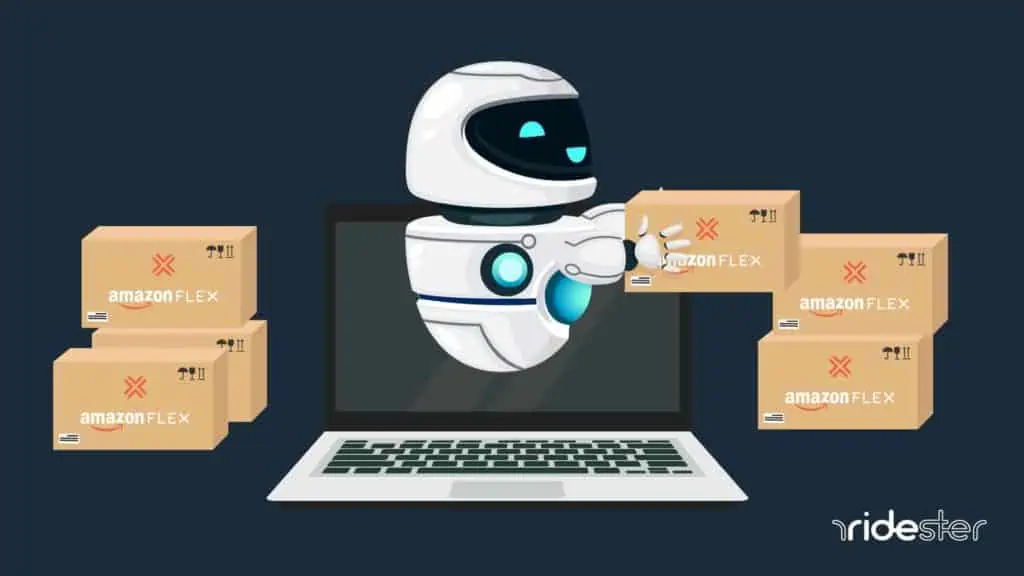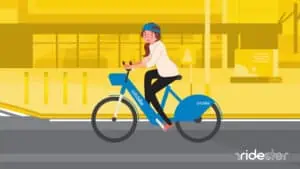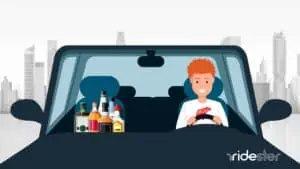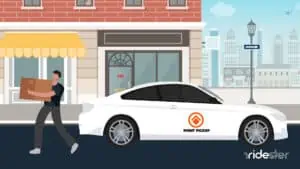Key Takeaways
- Amazon Flex bots automate the task of securing delivery blocks, making it easier for drivers to claim shifts.
- Their use is against Amazon Flex’s terms of service, risking penalties such as account suspension or deactivation.
- Amazon actively combats bot usage with measures like machine learning detection and CAPTCHAs to ensure fair shift distribution.
- Despite the risks, some drivers use bots to gain a competitive advantage in securing lucrative delivery blocks.
What Are Amazon Flex Bots?
Amazon Flex bots are automated tools used by Amazon Flex drivers to grab more shifts, or “blocks,” more efficiently than manual selection allows. They operate by automating the process of refreshing, swiping, and tapping within the Amazon Flex app to claim them.
While they offer a significant advantage in securing more work, their use is against Amazon Flex’s terms of service and can result in penalties, including account deactivation.
Why Do Amazon Flex Drivers Use Bots?
Amazon Flex drivers use bots because these tools can quickly and automatically secure delivery blocks within the Amazon Flex app, which is crucial given the high competition among drivers for a limited number of available shifts.
The bots can operate the app to claim shifts without the need for constant manual refreshing and swiping, which is challenging to do especially while driving or during other activities.
This automation helps drivers ensure they get a consistent volume of delivery work, which directly impacts their earnings.
Amazon Vs Bots: The End of Block-Grabbers?
Amazon is actively combatting the use of bots in its Amazon Flex program to ensure fairness and security for its delivery partners.
They’ve implemented several measures:
- Advanced Machine Learning: Identifies and warns bot-using accounts, removing repeat offenders from Amazon Flex.
- CAPTCHAs: Introduces puzzles to confirm human users when bot activity is suspected.
- Backend Access Confirmation: Ensures only legitimate mobile access to Amazon’s systems, blocking suspected bot requests.
- Legal Action Against Bot Service Providers: Targets companies providing bot services, which risk user privacy and security.
Due to these measures, Amazon successfully blocked close to 10 million bot attempts to reserve work blocks in a single month. This has enhanced the opportunity for delivery partners to obtain work blocks in a fair and secure manner.
Amazon continues to dedicate resources towards maintaining a fair and secure working environment for all its delivery partners.
The Best Amazon Flex Bots (Overview)
Looking at the large number of apps that offer Amazon Flex bots, it’s clear that they’re pretty popular. Here are some of the top apps used right now as Amazon Flex bots.
Brett’s Take: Thoughts From an Expert
There’s a massive long-standing debate among drivers about the ethics of using bots.
Some argue that bots provide an unfair advantage and make it harder for drivers who don’t use them to get blocks. Others view them as a necessary tool in a competitive environment.
This has caused division within the driver community. My suggestion is if you use one, don’t talk about it because you’ll probably have quite a few people upset with you.
Also, Amazon is aware of these bots and is implementing measures to counteract them, including enhanced security features in the Flex app. This has led to errors like the ‘420 ERROR’, hindering the effectiveness of some bots.
Are Amazon Flex Bots Allowed?
No, Amazon Flex bots are not allowed. The service’s terms of service explicitly prohibit the use of automation tools like bots for securing delivery blocks.
Drivers who use bots risk penalties, including temporary blocks from seeing new shifts, suspension, or even permanent deactivation from the Amazon Flex program.
Despite the temptation due to competitive shift availability, the use of such bots can lead to significant repercussions for drivers.
What Happens if You Get Caught Using a Bot?
If an Amazon Flex driver is caught using a bot, they will likely be hit with a ‘soft block’, which slows their account activity, making it impossible to see or accept new delivery blocks for a while.
While the Federal Trade Commission is not expected to intervene directly in such cases, Amazon does take these violations seriously.
Continued or serious breaches of the rules can lead to stronger penalties, such as repeated soft blocks or even suspension from the Flex app, cutting off the ability to work. Complete loss of access to the app is possible for severe infractions.
Though amazon spokesperson Kate Kudrna emphasizes that they “investigate all driver appeals,” if one of Amazon’s algorithms detects a bot, you may have an uphill fight to remain an Amazon Flex delivery partner.
Are Amazon Flex Bots Worth It?
Amazon’s in the middle of a crackdown against the use of bots by their delivery partners. But, bot developers also work hard to make their apps, robots, and devices undetectable, so an Amazon driver doesn’t have to worry too much.
Users can adjust the speed of the auto-tappers to try and fool Amazon’s servers and software into thinking a human is working the app instead of a bot.
Allows drivers to focus on other things besides tapping and swiping in the app
Provides a means to prioritize an Amazon Flex block closer to a driver’s home
Limits or avoids trips with long-travel times to reach a distant warehouse
Better chance to grab high-demand blocks
More earning potential as a Flex worker
Getting caught has consequences
Other drivers don’t always support the use of bots
You can lose your gig in the Amazon Flex program
How to Set Up Bots on Amazon Flex
The process for setting up apps varies by the particular application. Plus, some Amazon Flex bots aren’t software-based, so their setup is quite different.
Here’s a general guide to help you understand how to set up bots on Amazon Flex.
Step by Step Guide
- Verify your third-party apps will work with your hardware.
- Purchase and install the app.
- Follow the instructions provided by the app provider to integrate it into your Amazon Flex account.
- Use the app to accept blocks faster and more efficiently.
- Increase your profit and save time and energy.
Keep in mind there are also Amazon Flex bots that install physical swipers and tappers onto the body of your phone.
They do the job of physically tapping and swiping and are another option besides software applications that automate the process of snatching blocks.
Amazon Flex Bots: The Bottom Line

Though outlawed by Amazon, Flex bots are here to stay.
They are exceedingly good at what they do, and Amazon contract drivers continue to make use of block grabbers to out-click the competition and claim instant offers on the Flex utility.
Until Amazon figures out a way to completely level the playing field and truly remove bots from their ecosystem, drivers will continue to use them to their advantage.
Or, could find a way to compensate their delivery partners fairly, so they don’t need an Amazon Flex bot.
If you’re considering using a bot to advance your career as an Amazon Flex driver, you now understand your options, the risks, and you have all the facts you need to make the right decision for you!










Hi, how can I eliminate or make a bot stop tapping. I stopped using bot and when I try to do it manually the flex app says that I had tapped too many times, it look like the bot still running. How can I get rid of that. Thanks